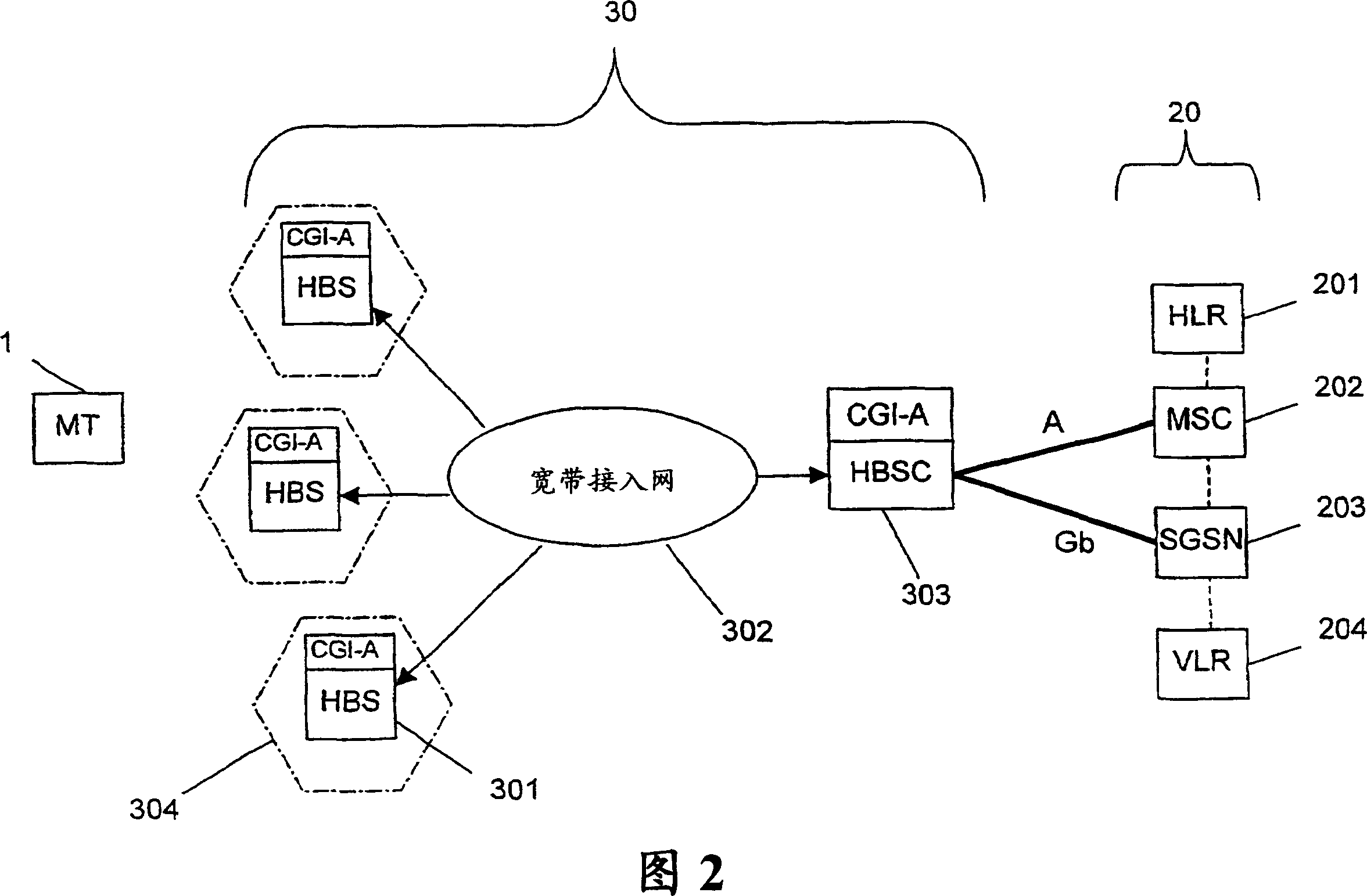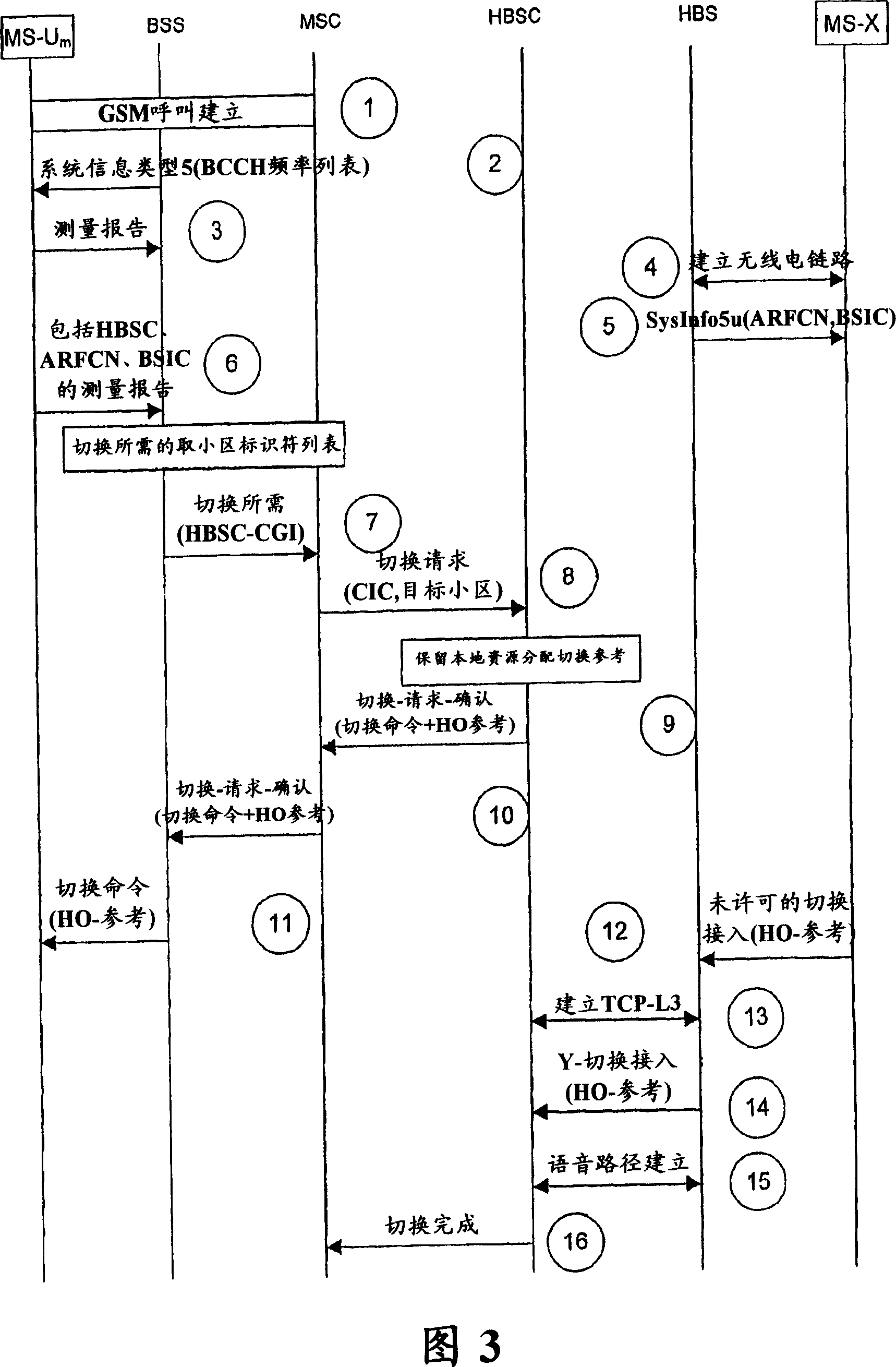Handover between a cellular network and an unlicensed radio access network using a single identifier for all the access points
A radio interface and access network technology, applied in the field of mobile communications, can solve problems such as changes in the number and location of access points, and base station controllers that cannot be edited
- Summary
- Abstract
- Description
- Claims
- Application Information
AI Technical Summary
Problems solved by technology
Method used
Image
Examples
Embodiment Construction
[0017] Figure 1 schematically illustrates the components of a conventional GSM network. The network is basically divided into a core network part 20 and an access part 10 . The elements of the core network shown in the figure include a Mobile Switching Center or MSC 202 , an associated Home Location Register HLR 201 and a Visitor Location Register VLR 204 . The functions and structures of these traditional GSM architectural elements are already known to those skilled in the art and will not be described in more detail here. The core network also supports General Packet Radio Service (GPRS), for which purpose a Serving GPRS Support Node (SGSN) 203 is illustrated. Although not illustrated in the figure, those skilled in the art will appreciate that the core network portion may include access to other mobile and fixed line networks, such as ISDN and PSTN networks, packet and circuit switched packet data networks, through one or more gateway nodes , such as intranets, extranets,...
PUM
 Login to View More
Login to View More Abstract
Description
Claims
Application Information
 Login to View More
Login to View More - R&D Engineer
- R&D Manager
- IP Professional
- Industry Leading Data Capabilities
- Powerful AI technology
- Patent DNA Extraction
Browse by: Latest US Patents, China's latest patents, Technical Efficacy Thesaurus, Application Domain, Technology Topic, Popular Technical Reports.
© 2024 PatSnap. All rights reserved.Legal|Privacy policy|Modern Slavery Act Transparency Statement|Sitemap|About US| Contact US: help@patsnap.com










